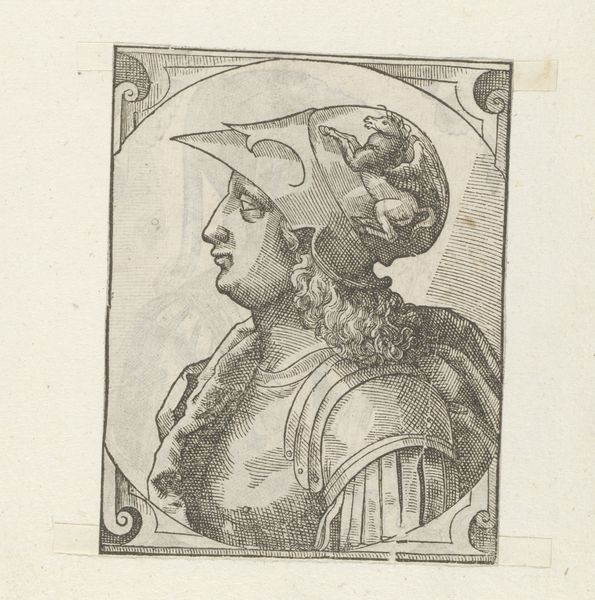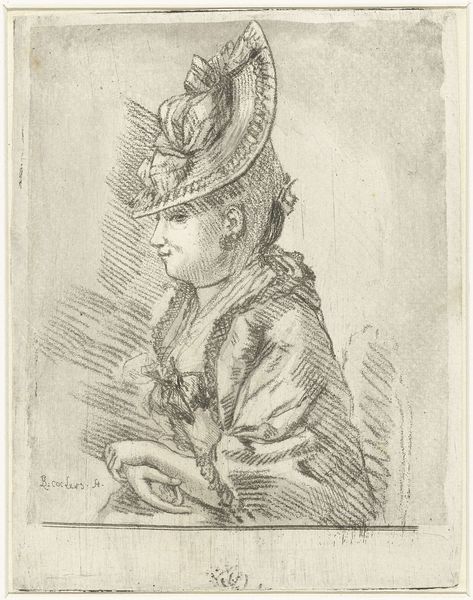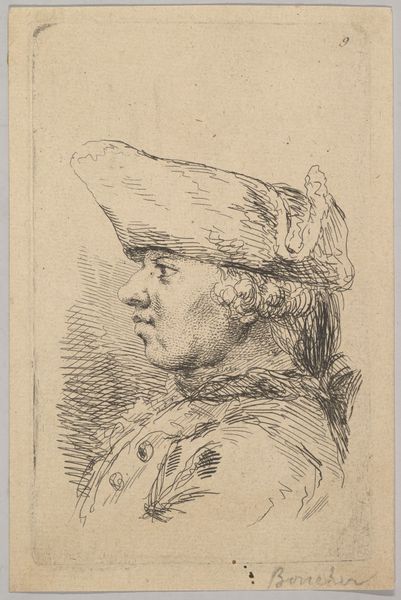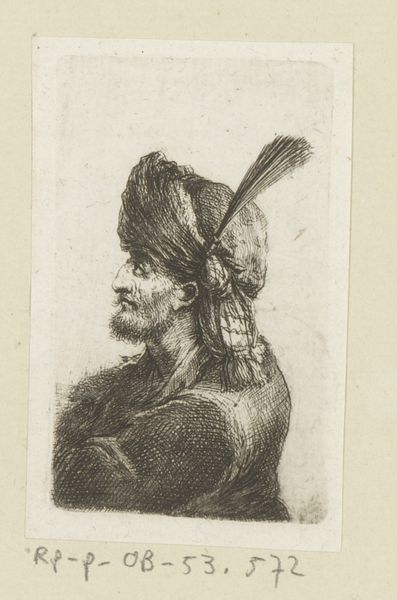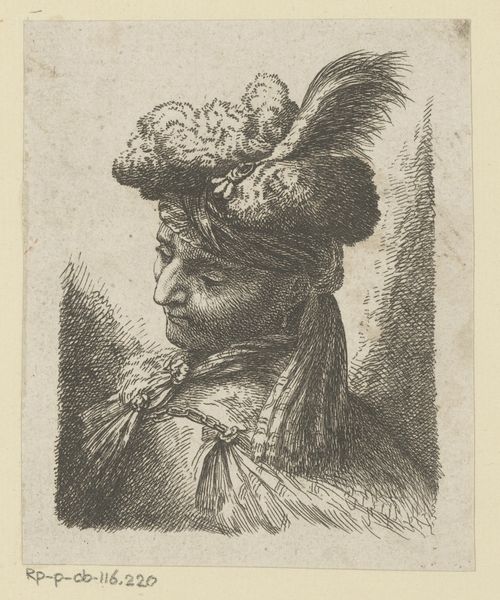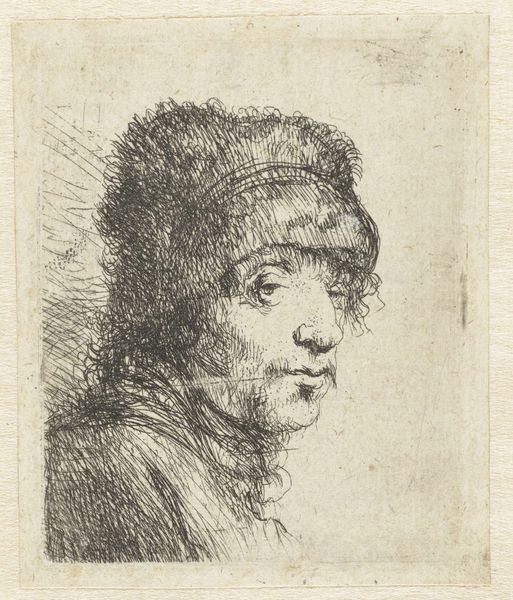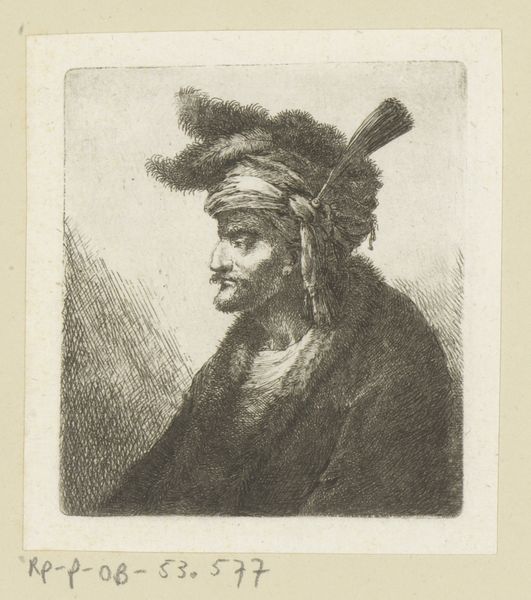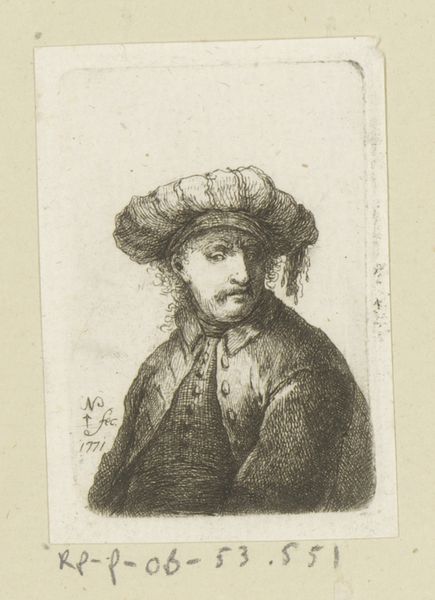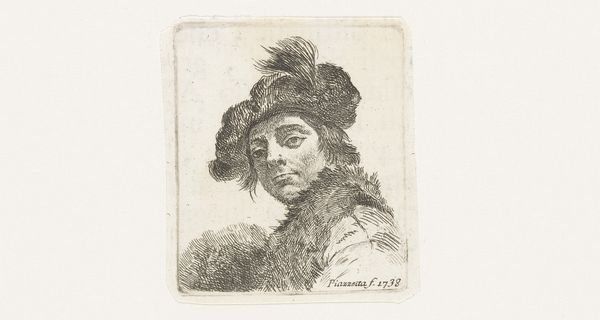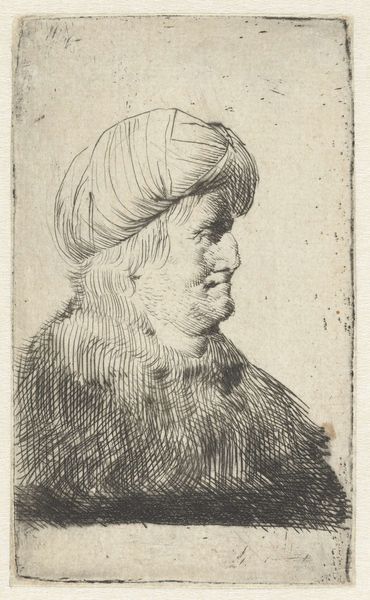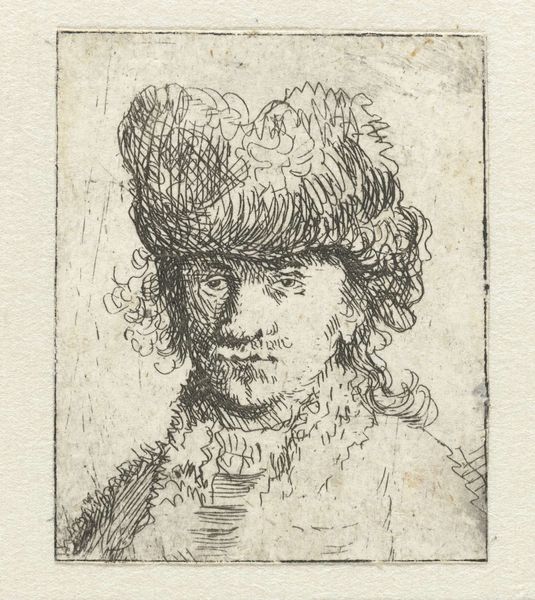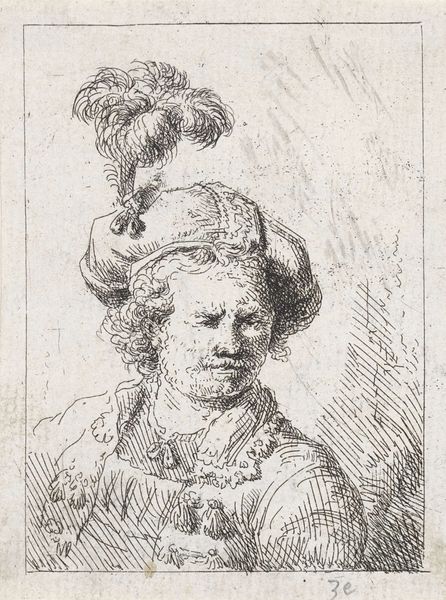
Dimensions: height 57 mm, width 40 mm
Copyright: Rijks Museum: Open Domain
This etching titled "Man met tulband met veren" was made by Johann Andreas Benjamin Nothnagel in the 18th century. The turban, adorned with plumes, signifies more than mere headdress, it represents a confluence of cultural exchange. In the 18th century, turbans with feathers were often associated with exoticism and the 'Orient.' Consider how similar motifs appear in Renaissance paintings, where feathered headgear might denote nobility or foreign dignitaries, revealing how such symbols transcend geographical and temporal boundaries. However, the flamboyance of the feathers hints at a more primal allure, engaging the viewer's subconscious, stirring emotions associated with spectacle and the assertion of identity. Ultimately, this image of a man in a turban is an echo through the corridors of time, a reminder of how symbols are perpetually reborn, their meanings reshaped by the ever-shifting tides of history and the collective psyche.
Comments
No comments
Be the first to comment and join the conversation on the ultimate creative platform.
